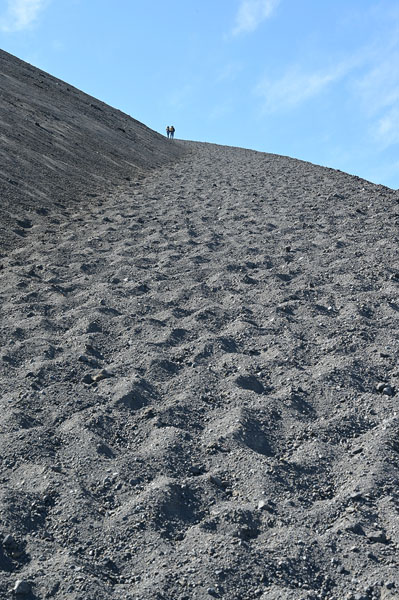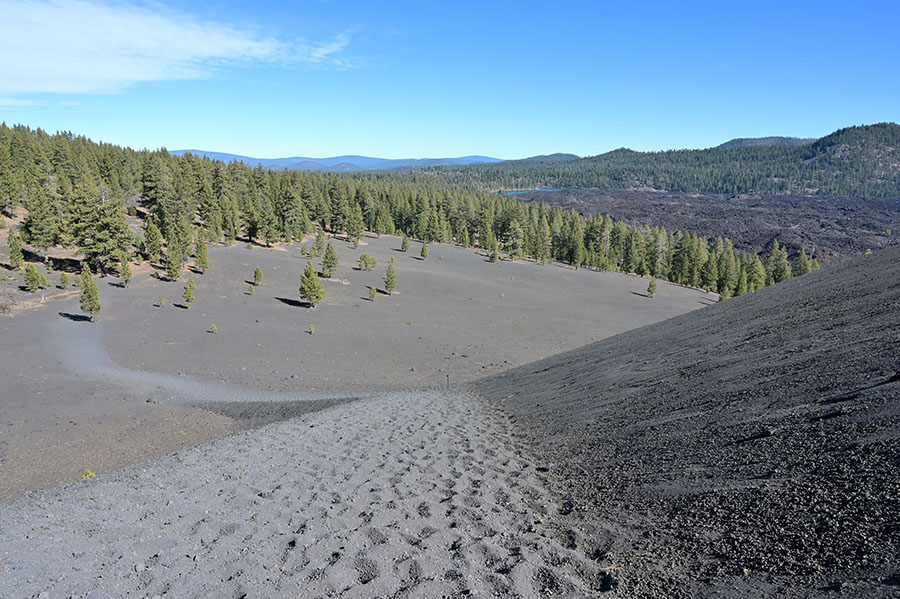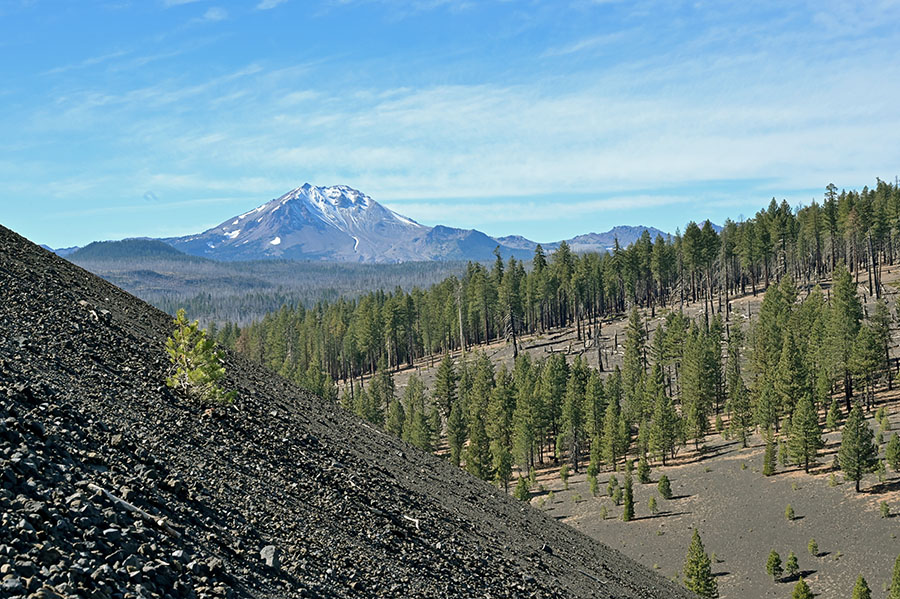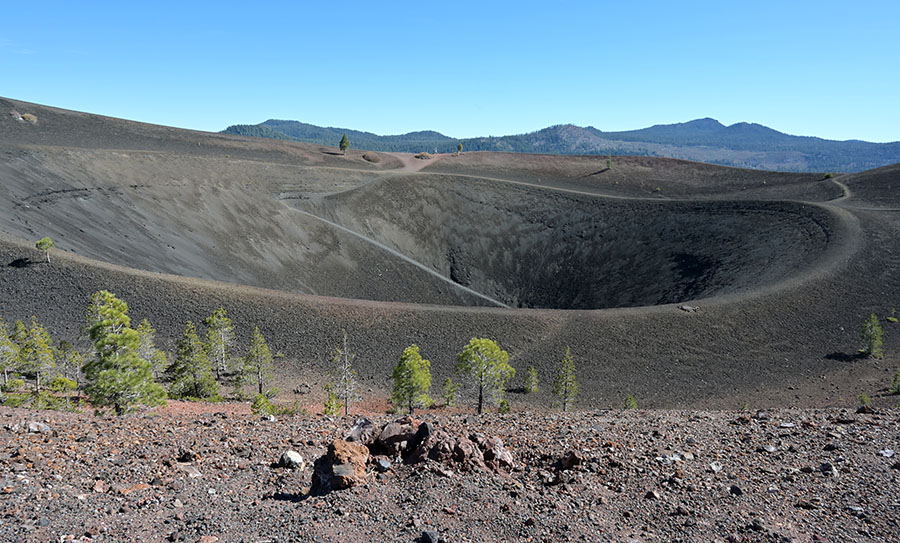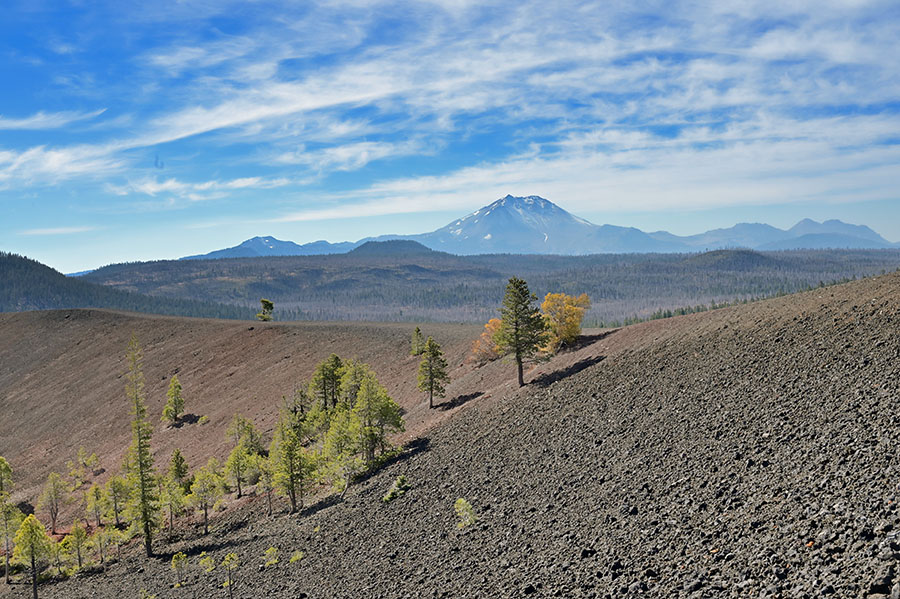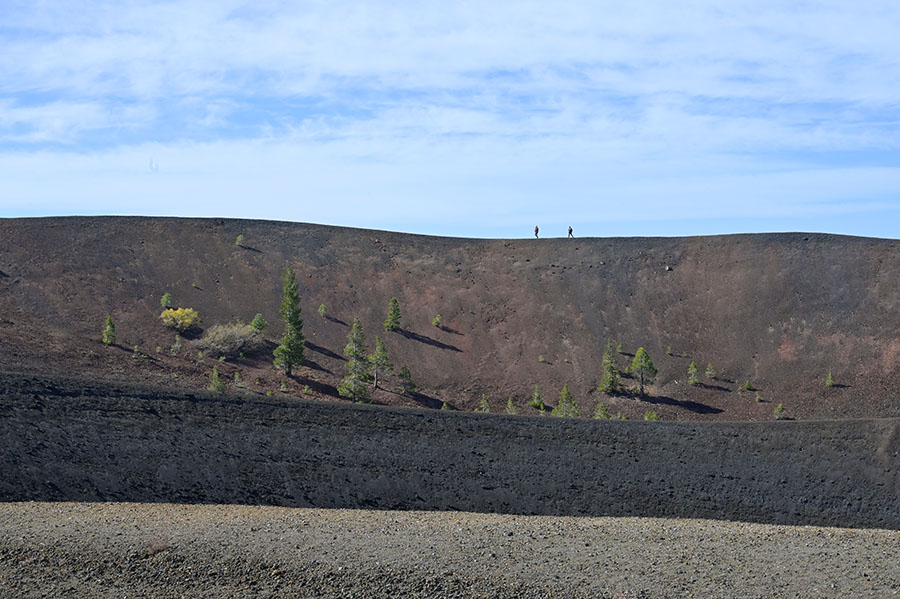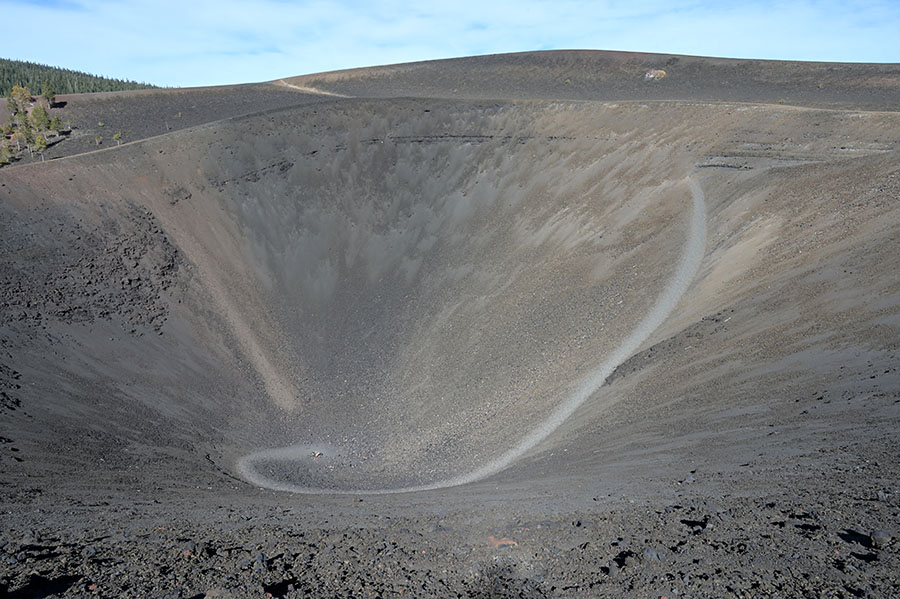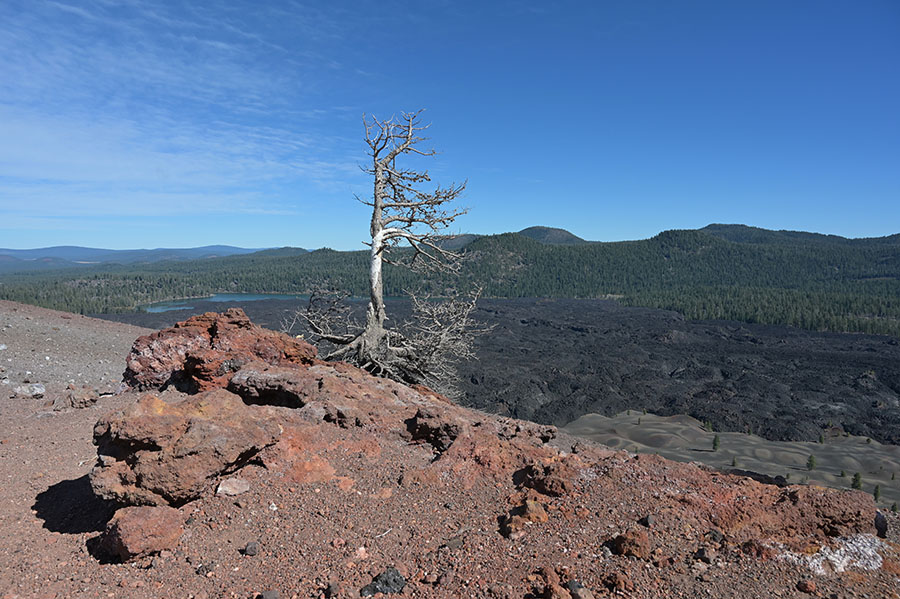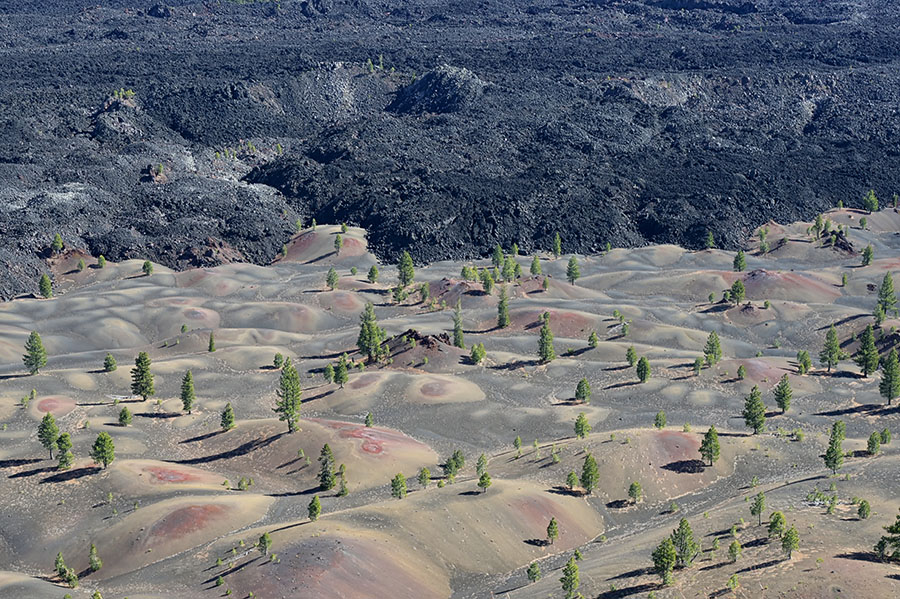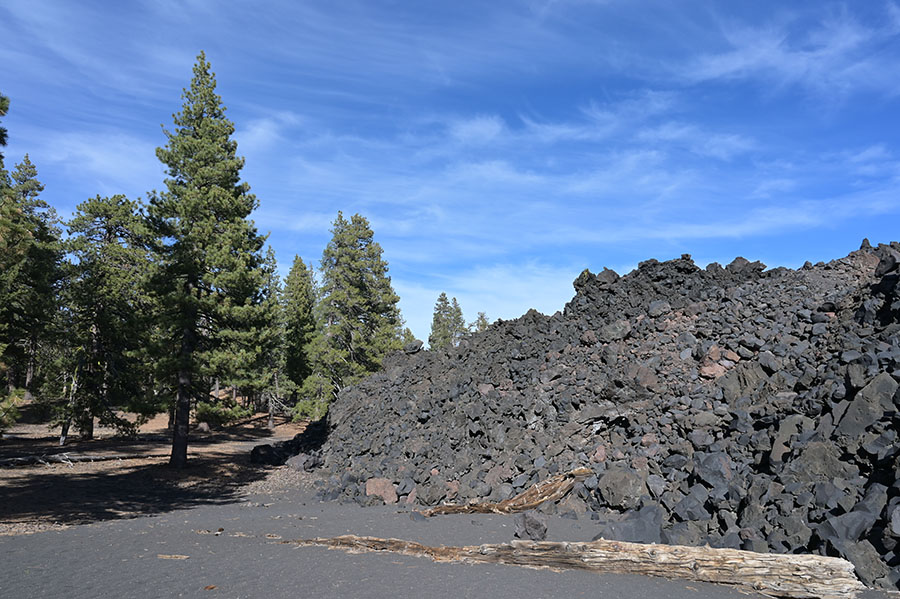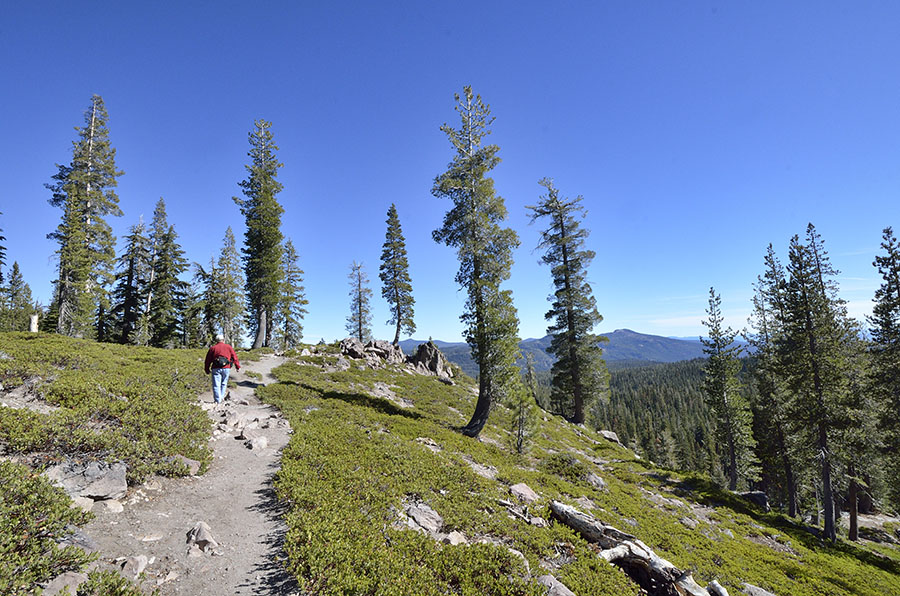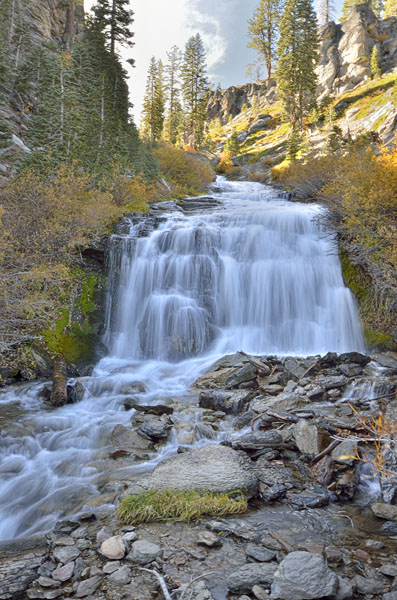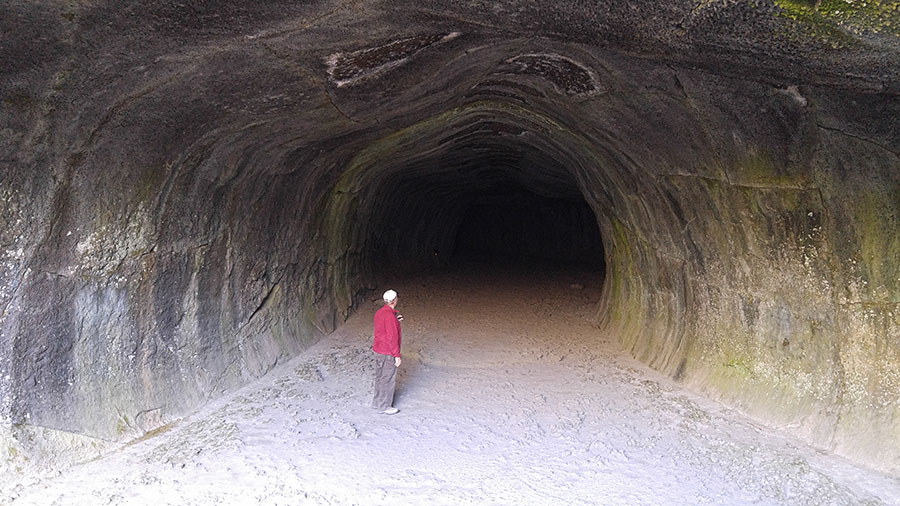First it was a mountain, then it became a lake thanks to a huge volcanic eruption about 7700 years ago. Crater Lake is big and it’s really intensely blue!
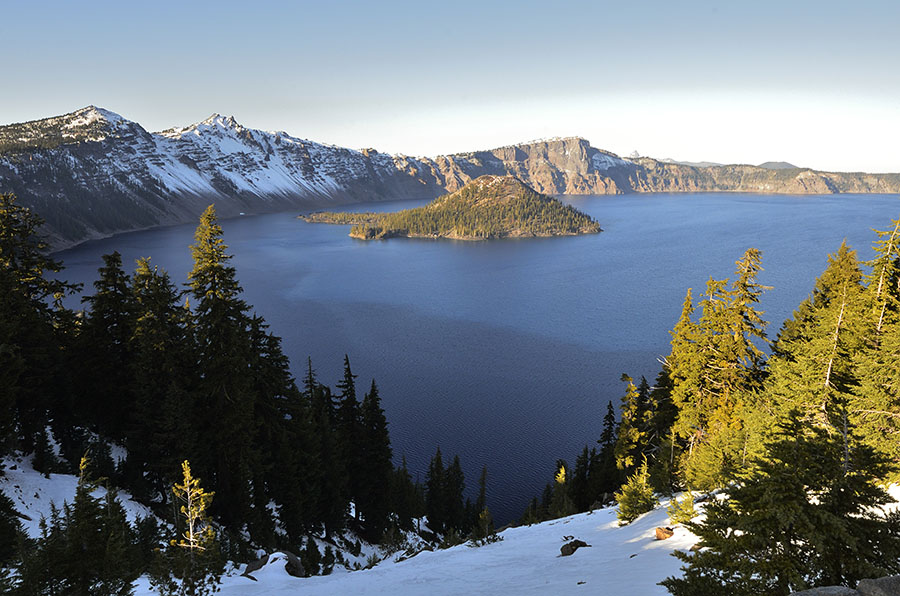
Crater Lake is located in the southwest corner of Oregon at an altitude of about 6100′, though the lake level varies with precipitation. It’s the deepest lake in the U.S. at 1943′, but all the statistics and superlatives are eclipsed by the fact that it’s really beautiful.
Wizard Island, the most prominent feature in the lake, is a cinder cone from a subsequent eruption. Several other cinder cones have been left behind from other eruptions, but the rest of them are hidden in the depths of the lake.
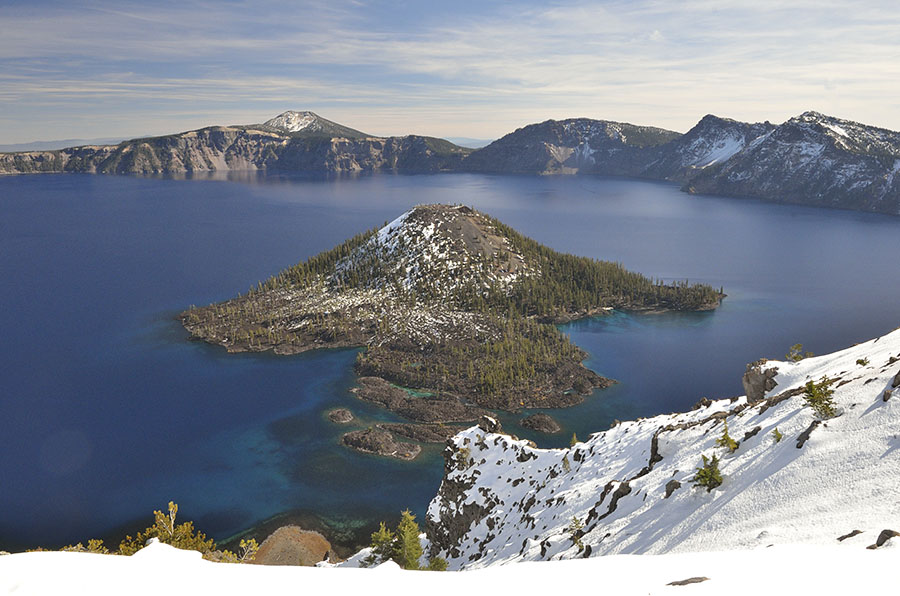
These two photos of different parts of the rim try to show how high the lake sides are – ranging from 500′ to almost 2000′ above the lake level. It’s hard to grasp how big it is just peering down from the rim.
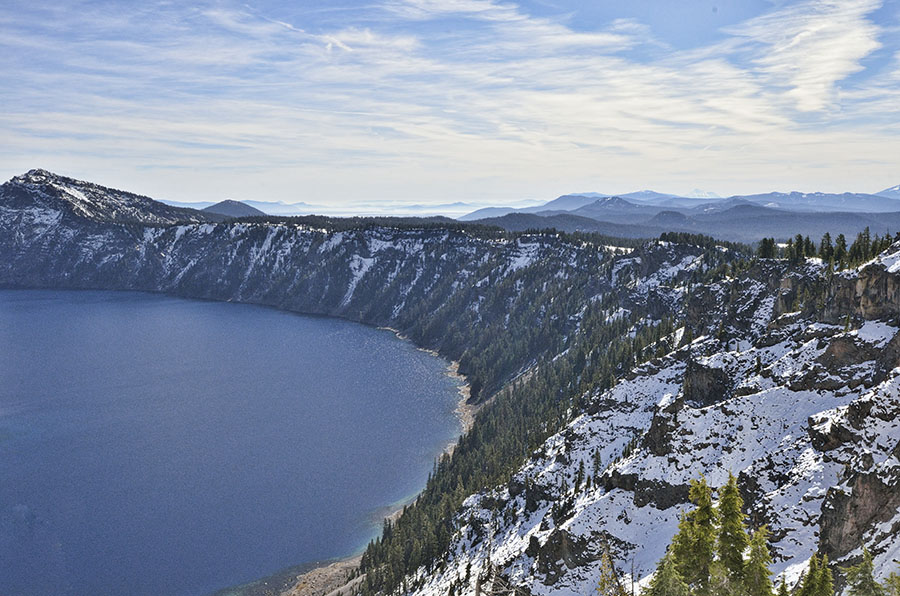
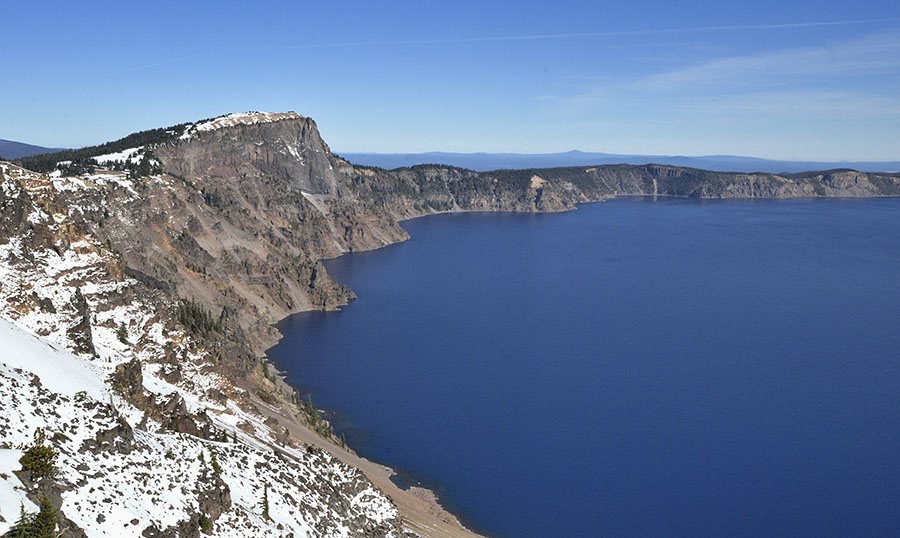
We were at the lake in later October, but most of the rim road was already closed due to snow. Crater Lake is a very snowy place, getting up to 533 inches a year!
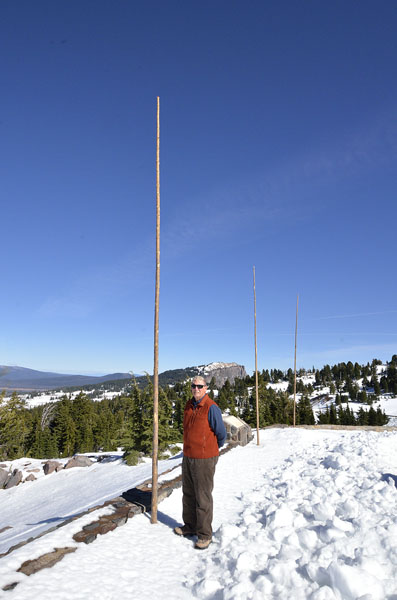
The second day we were there the plows managed to open up a little section of the rim road so we could explore the park just to the north of the lake itself. Distant mountains…
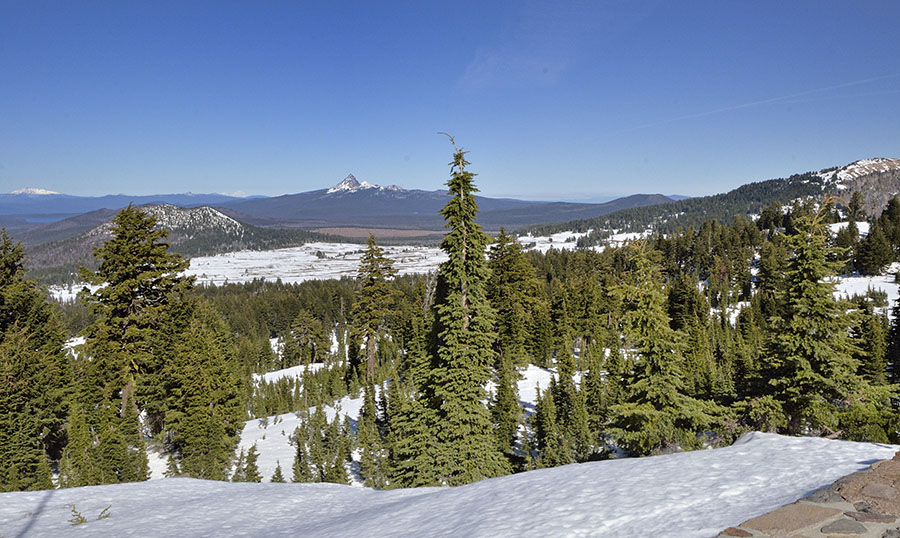
…and the Pumice Desert tell the unmistakable story of volcanic activity throughout the region.
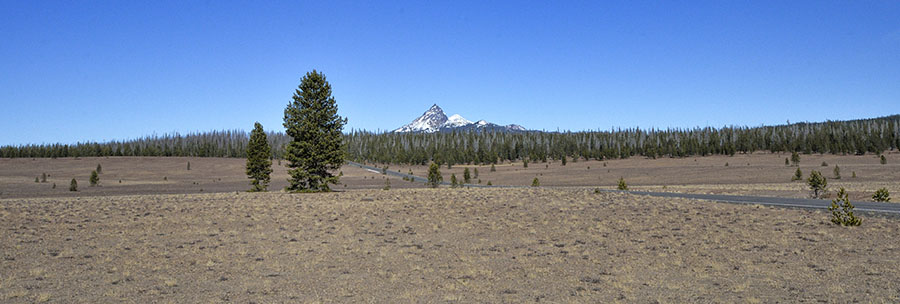
As we wrapped up our fall road trip we realized that almost all of our stops were related to volcanoes and geothermal activity, though we didn’t set out with that intention. We covered roughly 4000 miles on our circuit around some of the western states and the fact is that volcanoes and faults and basin-and-range formations influence a significant part of the landscape in the northwest.
We’re sorry to take so long to get back to the Blog, but we arrived home and hit the ground running… and now we’re already in the very busy (and fun) holiday season in Petersburg. There’s lots to report about – the massive town Christmas tree, Pickled Herring, etc. The stores are stocking up on butter and other baking supplies, the dancers are making final preparations for their recital next weekend, holiday parties are filling everyone’s calendars, homes and our boat are colorful and sparkly with lights to brighten these days with so little daylight. Santa is coming!

